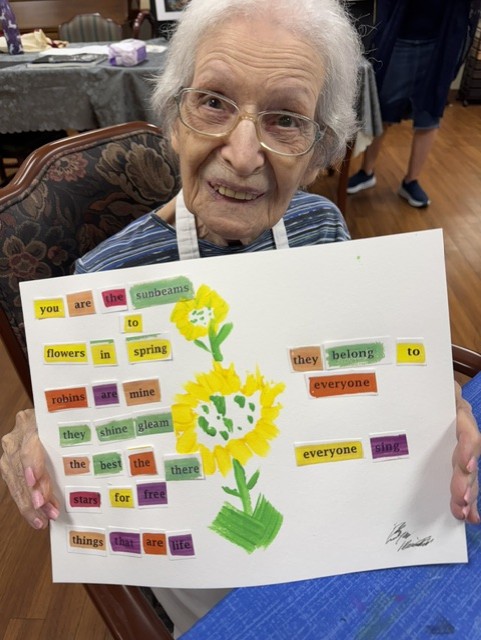It is amazing how much we relate and respond to, interact with and use colors. Long ago I heard about research that showed that churches with blue carpet gave more money than those with plush red on the floors. But red walls in the area where you eat can result in eating more food than other hues surrounding the dining room table. Contrary to traditional trends, infants prefer bold colors to pastels. But we know that softer colors of green and blue can help to calm our minds. Color is a powerful way to communicate in ways I do not fully understand, and which researchers of many fields like to investigate.
This blog begins a new series from our writers who have chosen to write about color—in whatever way that stimulates our sacred imaginations. We thought that this might be a helpful exercise in this season where, at least in the Midwest, we are surrounded by many shades of brown and gray with occasional white thrown on top. We know that we perk up when the sky beams blue and when the yellow rays of the sun literally and figuratively warm our moods and our hands and feet and noses.
Colors Have Meaning
Color affects our unconscious reactions which in turn we have been trained to respond accordingly. Red, yellow and green are the color cues that affect our traffic patterns and behaviors. When colors are combined with other symbols the message speaks more quickly than words. A red hexagon, and we stop. A red circle surrounding a slash and we know that whatever word or image below that is something we are not supposed to do. A yellow plastic ribbon with black letters c-a-u-t-i-o-n is more powerful than a sign with the letters alone. An orange cone and we know caution—and probably an internal feeling of dread for disruption down the literal road. A bright neon green vest and we are more likely to see the individual wearing it.
The spectrum of the rainbow is a powerful visual cue for those in the LGBTQ+ community that signifies welcome and acceptance and hopefully, safety. Every company or entity with a “brand” will tell you that the exact color of their logo and “brand” is paramount to people recognizing and responding to their messages or products.
Color Relationships
There is actually color theory. Artists and designers know a bit about how different colors interact with each other. There are color wheels that help to demonstrate these relationships. Some are based on red-yellow-blue, the primary colors which are used to mix paints, for instance. The red-green-blue color wheel is for on-line use as it has to do with the fact that the light of our screens affects the way we see the colors. Warm or cool, primary, secondary and tertiary are all terms that relate to the color wheel. Shades (addition of black to a color), tints (addition of white to a color) and tones (adding grey) all reveal the complexity of the colors.
We use color in so many ways in our world and we don’t even notice. From movie titles, The Color Purple, to social research projects, Blue Zones, from music groups, Green Day, to individual’s names, Pink, from political groups, the Green party to restaurants, Red Lobster, the color helps to immediately illicit emotion and communicate identifiable information.
Christian Church Year Colors
In the Christian calendar, we use colors to mark the seasons of the liturgical calendar. Purple is the traditional color for Advent, a color which in ancient days signified royalty. The Advent candles were purple to mark the weeks until the birth of the Christ child. Purple also represents repentance and reflection and is also used in the season of Lent, the 40 days leading up to Easter. White is used as a symbol of sacred days for when communion is celebrated, Easter and the season following Easter or for funeral/memorial services. Red is the color of the Spirit and those occasions which the energy of the Spirit is profound, such as Pentecost or ordinations or other celebrations. Green is for the “ordinary” time between Pentecost and Advent, and Christmastide and Lent. It is the color of growth.
What if, as we begin a new year and are encouraged to choose a word or are encouraged to set goals, what if we each chose a color for our year? Not necessarily a “favorite” color, but a color that you want to pay attention to. A color that elicits an emotive response. A color that is a symbol for something you want to reflect on. A color that may or may not already surround you in your world.
If you had to describe the state of your spirit today, what color would you use to describe it?
If you could choose a color that represents how you want to be in the world, what color would you choose?
Or, if like Celie in the Color Purple, what color does God want you to notice as you walk through the fields of your life?
May your coming year provide you with ample opportunities to experience the color of all creation, bringing you connection, joy and energy as you live and work and play in the communities that surround and support you. Happy Colorful New Year!
For Reflection (either individually or with a group)
Read the blog. Read it a second time, maybe reading it aloud or asking someone else to read it aloud so you can hear it with different intonation and emphases. Invite the Divine to open your heart to allow the light of new understanding to pierce the shadows of embedded assumptions, stereotypes, and ways of thinking so that you may live more abundantly. Then spend some time with the following questions together with anything or anyone who helps you reflect more deeply.
- If you had to describe the state of your spirit today, what color would you use to describe it?
- If you could choose a color that represents how you want to be in the world, what color would you choose?
- Or, if like Celie in the Color Purple, what color does God want you to notice as you walk through the fields of your life?
Download a pdf including the Reflection Questions to share and discuss with friends, family, or members of your faith community small group.
1/11/24 15:00
View all articles by:






















